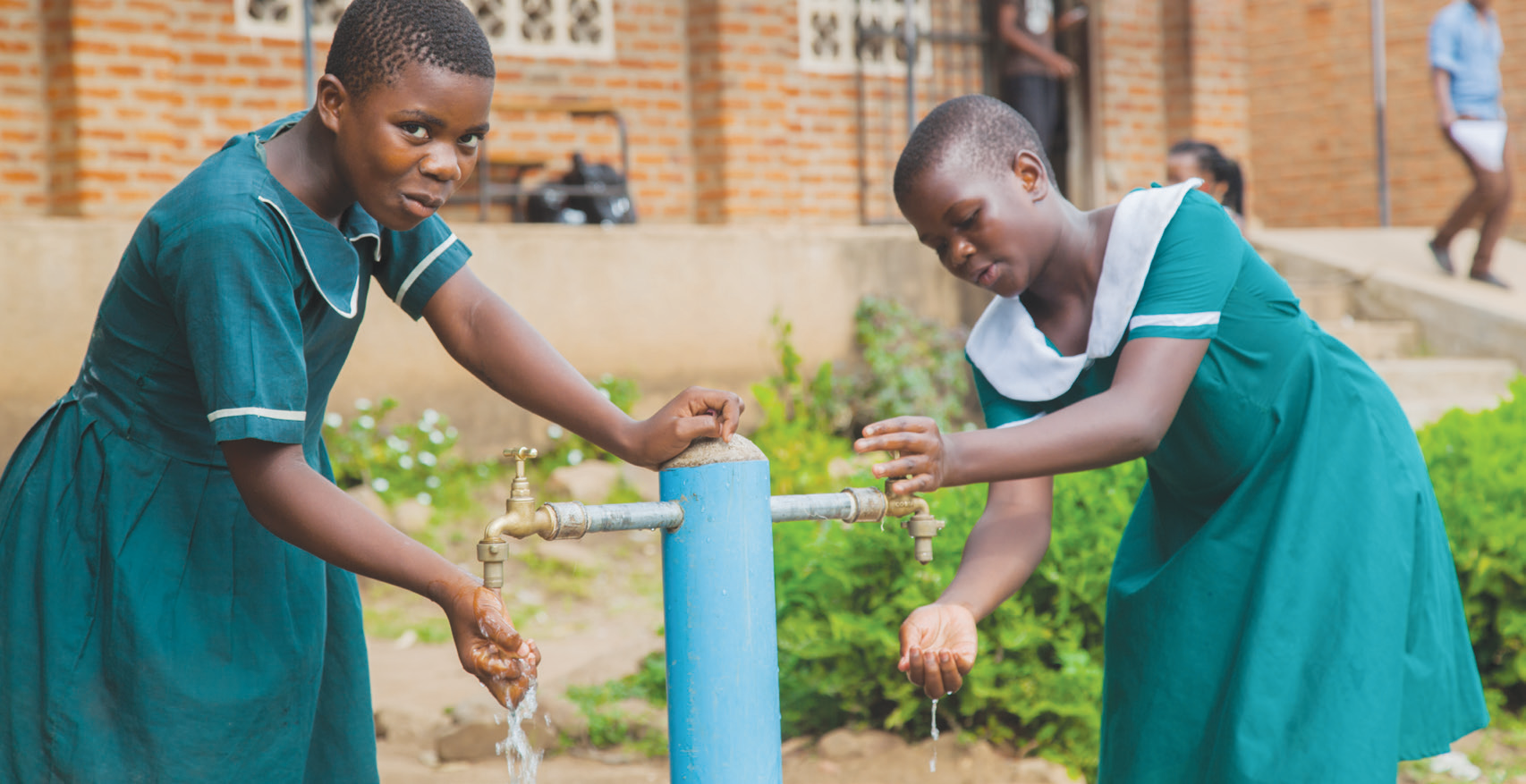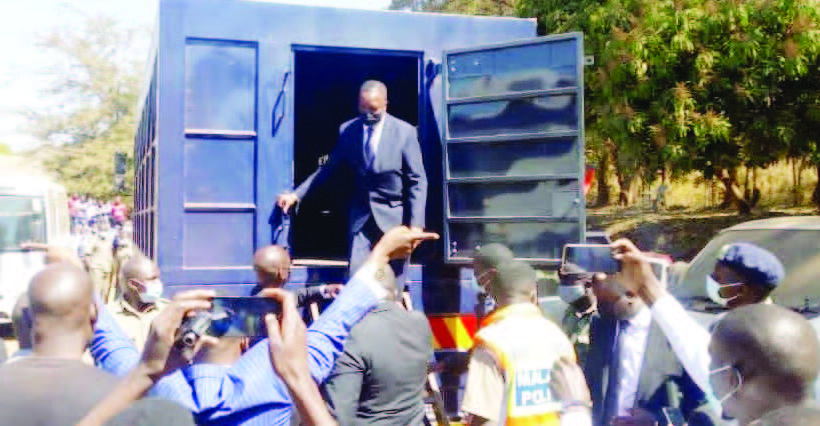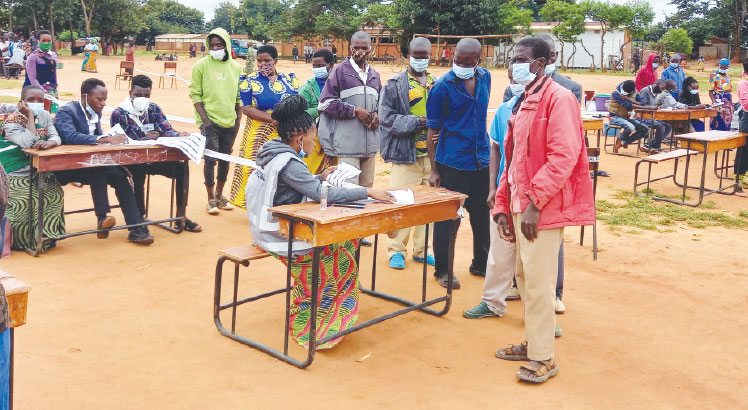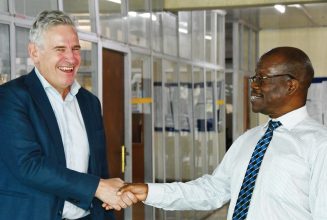Schools grapple with water challenges
It’s break time and a bell rings.
Mtende Chisambi, 14, a Standard Seven learner at Chihanga Primary School in Rumphi District and her classmates rush to the nearby Chihanga River to drink water.

The school has no piped water and the only borehole it had broke down some years ago.
Mtende and other girls miss classes when they menstruate.
Explains Mtende: “How can I go to school when I’m menstruating? How will I be able to clean myself?
“The problem is that absenteeism affects my performance in class.”
Mtende’s father, Suzgo Chisambi, is the school’s management committee chairperson.
In an interview yesterday, Chisambi said his committee is aware of the problem and it is working to resolve it.
He said: “Every time we fix the borehole, it works for a few days and breaks down again.
“We are working towards finding a lasting solution to the challenge.”
Chief Kabelubelu confirmed that the learners at the school, alongside the surrounding community, drink from the river.
He said: “We know we put our lives at risk, but our hands are tied. What can we do?
“Fixing the borehole is a short-term solution as in the dry season, when the water table goes down, water does not come out from the borehole.
“What saddens me is that we drink water from the same river where monkeys also quench their thirst.”
Rumphi East member of Parliament Kamlepo Kalua said he is no aware of the water challenges at the school.
He said: “But I will work out something soon because we have some money to fix the problem. It’s not from the Constituency Development Fund, but a separate fund.”
The water challenge is not unique to rural schools.
Enifa, a Standard Eight learner at Namatapa Primary School in Blantyre and other girls also miss classes when they have their periods.
Namatapa Primary School experiences water challenges since its water supply pipes were vandalised sometime back and the only source of water is a borehole sank 100 metres from the school’s functional pit latrines.
Without water storage facilities in the latrines, Enifa and fellow girl learners find it difficult to clean themselves during menstruation.
The 15-year-old Enifa says: “With one functional borehole at the school, it is not easy for most girls to access water during menstruation.
“As such, most of us stay away from class, resulting in poor performance.”
During break time at Naotcha Primary School in Blantyre’s Chilobwe Township on Wednesday learners were seen coming out of latrines and buying foodstuffs at a nearby market.
One of the learners, seven-year-old Kizito, was seen eating doughnuts without washing hands.
In an interview, Kizito said he could not wash hands as the school has only one borehole where “big boys push away small ones to be the first to access water”.
Meffa Yakobe, a mother to a Standard Four girl at the same year-old daughter carries a bottle of water when going to school. primary school, said her nine-
She said it is a challenge for young girls to use a borehole because boys bulldoze their way to have their turn first.
Said Yakobe: “But the danger still remains that if they are to use the toilet, they may go back in class or eat food without washing their hands.”
A spot-check by Nation on Sunday confirmed that some schools had their water disconnected due to vandalism and non-payment of bills, but lucky ones get their water from boreholes.
In Rumphi, for example, learners from Chitimba and Thekero Primary schools drink water from boreholes whereas those from Champhera and Kahewe drink from rivers and wells.
Learners from Kambenene and Sangilu Primary schools in Karonga struggle to access water as they do not have boreholes while those from Luwezga, Ndomu, Khwawa, Hara and Sangilu primary schools are lucky to have boreholes.
In Lilongwe City, according to our findings, some schools do not have potable water and they rely on boreholes.
Msambachikho Primary School, for example, water was disconnected due to bills whereas Chimwala, Minga and Bunda primary schools rely on boreholes.
Ministry of Education, Science and Technology Principal Secretary Chikondano Mussa confirmed in an interview last Thursday that water is a challenge in schools, particularly those in rural areas.
She said 352 primary and secondary schools in rural areas have no water.
When the Covid-19 pandemic hit Malawi in March 2020, 640 primary and secondary schools had no potable water, raising fears among education and health experts that this would worsen the spread of the virus since washing of hands is one of the preventive measures.
Mussa said the ministry used Covid-19 funds to drill boreholes in some schools to contain the spread of the pandemic.
She said donors drilled 138 boreholes and the ministry was expected to sink 502.
She said: “Out of 502, we have managed to drill 150 boreholes, using Covid-19 funds.
“The challenge we have is capacity. We do not have many borehole drilling companies in the country. We have less than 35 who are struggling to have the job done on time.”
Using Covid-19 funds, Mussa said, government has also constructed 383 school blocks to decongest classrooms.
She said she was aware that in some schools, mostly in the urban areas, the water problem was worsened by non-payment of bills and vandalism of waters systems.
Civil Society Education Coalition Network executive director Benedicto Kondowe said primary and secondary schools without potable water in the country exceed 400.
Kondowe said: “Without water, there is no way hygiene can be promoted. The right to education is at risk without water.”
Kondowe said, according to education agenda of the United Nations Educational, Scientific and Cultural Organisation, the right to education must never be infringed upon even in the critical emergencies such as Covid-19.
The 2019/20 Education Sector Performance Report on availability of potable water indicates that 51 percent of secondary schools depend on boreholes as their source of water.
It adds that piped water connected and available to the institutions is the second most available water source, representing 44 percent.
Reads the report, in part: “However, a total of 42 secondary schools nationwide have no source of water installed at the institution or nearby.”





